Art History Final Fall 2025
1/91
Earn XP
Description and Tags
ARHI 2400 Units 3 and 4
Name | Mastery | Learn | Test | Matching | Spaced |
|---|
No study sessions yet.
92 Terms
Rococo
lightness, pastels, dainty forms, painterly brushstrokes
shift from Baroque style
began as an architectural style
shift from classical subject matter to modern themes (leisure activities)
smaller scale paintings
Antoine Watteau, The Pleasures of the Ball (Les Plaisirs du Bal), c. 1715–17, oil on canvas, 65.2 x 52.5 cm
father of Rococo painting
light, loose feathery brushwork
asymmetry, no specific focal point—viewer floats through painting
upper class leisure activities - expensive dress, dancing, chatting, dog, music (assumed)
two young black men - striped clothes (servants)—Watteau’s main patrons were plantation owners (slave trade)
Watteau applied to the Academy as a history painter but accepted as Fêtes galantes (less prestigious, couldn;t teach)

Jean-Honoré Fragonard, The Swing, oil on canvas, 1767
Rococo
commissioned by a wealthy man
shift to more erotic undertones, leisure activities allow artist to show legs (she’s swinging, etc)
girl on swing, old man pushing the swing (her husband)
Affair: young man sitting looking up her skirt, woman making eye contact with him
dog is symbol of fidelity but is barking (disloyalty—affair)
angel statue shushing (secret of the affair)
inverted V composition

Neoclassicism
“correct forms,” clear attention to detail, somber colors, strong lines (timeless), classical subject matter
Jacques-Louis David, Oath of the Horatii, 1784, oil on canvas, 3.3 x 4.25 m
classical education, trains in studio, wins Priz de Rome (studies in Italy)
neoclassicism
Roman legend - conflict, representatives selected to fight—Horatii - 3 brothers fighting for Rome (left), swearing to protect
women (right) grieving because no matter what they will lose someone (married into other family)
moment that must have preceded the battle
geometric composition - 3 arches frame brothers, father, women
lesson/moral - country valued over obligations
displayed in salon (people were able to see the art), arranged by category
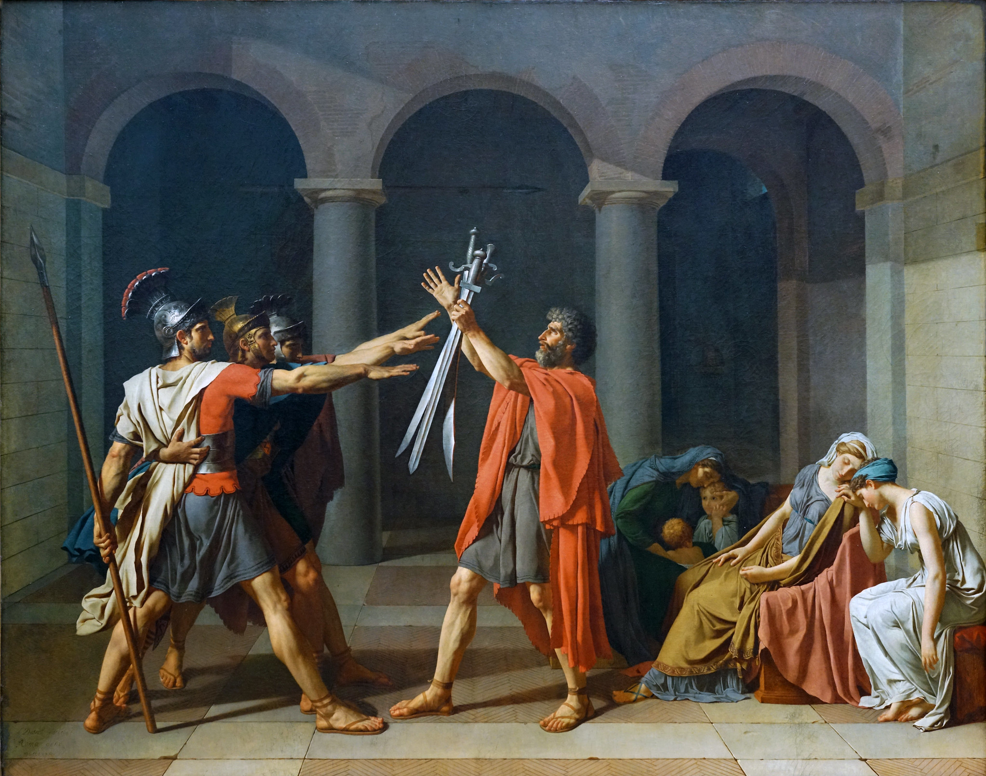
Benjamin West, The Death of General Wolfe, 1770, oil on canvas, 152.6 x 214.5 cm
raised in America but trains in Italy and lives in London to found Royal Academy of Art
neoclassicism
history painter but departs from conventions—not from bible (contemporary event: 7 yrs war), contemporary outfits instead of suggested togas (wanted to portray the “truth”)
major general wounded in battle, man running in to announce win
general posed like Christ, alluding him to a sacrifice
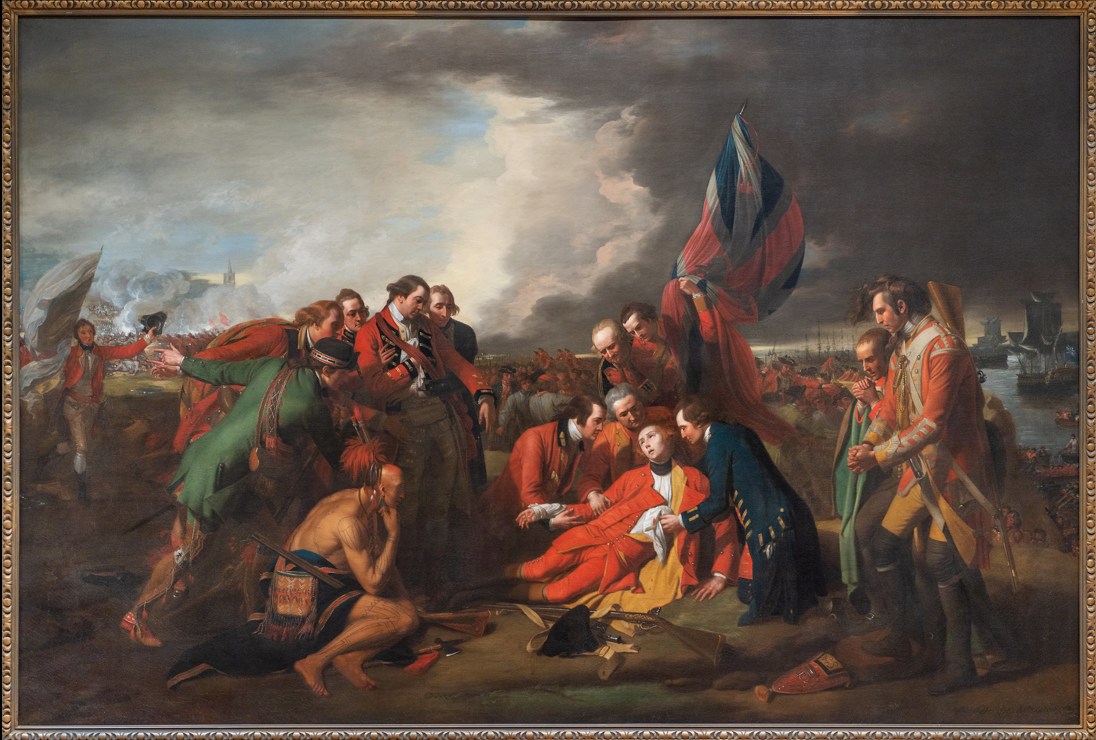
Romanticisim
loose, fluid brush strokes, expressive gestures, dramatic contrasts, strong colors (reminiscent of Baroque)
Eugène Delacroix, The Death of Sardanapalus, 1827, oil on canvas, 12 ft 10 in x 16 ft 3 in. (3.92 x 4.96m)
Romanticism
subject of a play - King orders for violent destruction of everything that brings him joy before his suicide
dominated by red color
composition: swirling movement with King on top, diagonals
death and destruction—woman being murdered, horse violently pulled
different cultures depicted - artist traveled the world (orientalism)

Jean-Léon Gérôme, Snake Charmer, c. 1879, oil on canvas
naked boy performing with serpent while man plays the flute
orientalism—depicts scene as if he witnessed it himself, implies nudity is normal there; scene is invented; merged many different cultures into one stereotypical monolith
Arabic country, background resembles mosque (nudity inappropriate)
detailed, naturalistic style
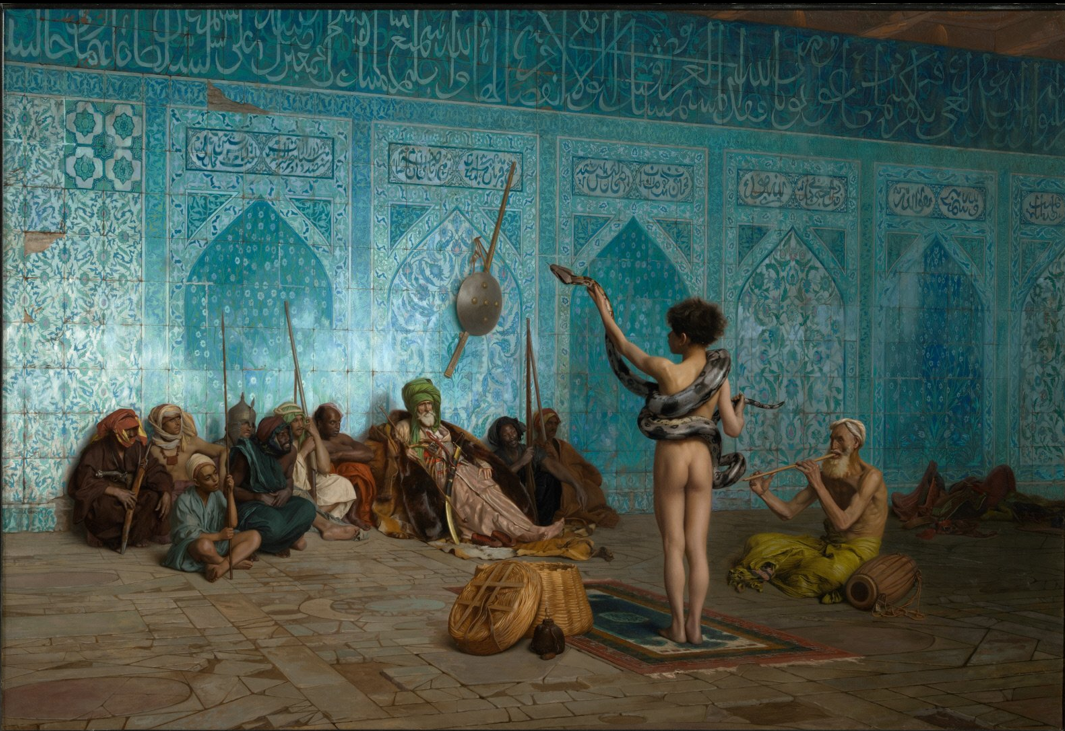
Realism
accurate, objective depiction of everyday life and ordinary people
Gustave Courbet, A Burial at Ornans, begun late summer 1849, completed 1850, 124 x 260 inches, oil on canvas
realism
funeral - dressed in black/gray (shown “as it was”)
large scale (typically depicted divine but this is everyday people)
shift in idea of who can be painted—everyone

Édouard Manet, Olympia, 1863, oil on canvas, 130 x 190 cm
realism
inspired by Titian’s Venus of Urbino
real woman (not mythology), features not idealized
sex worker (Olympia is a pseudonym for prostitutes)
maid presenting her flowers; jewelry, fancy sheets, etc (wealth)
expression (looking at viewer—intruder), hand placement - shows she does not enjoy the male eye
flower offering implies visitor (viewer?)
pale contrasting skin tone draws eye to her
disliked by public, thought she was ugly
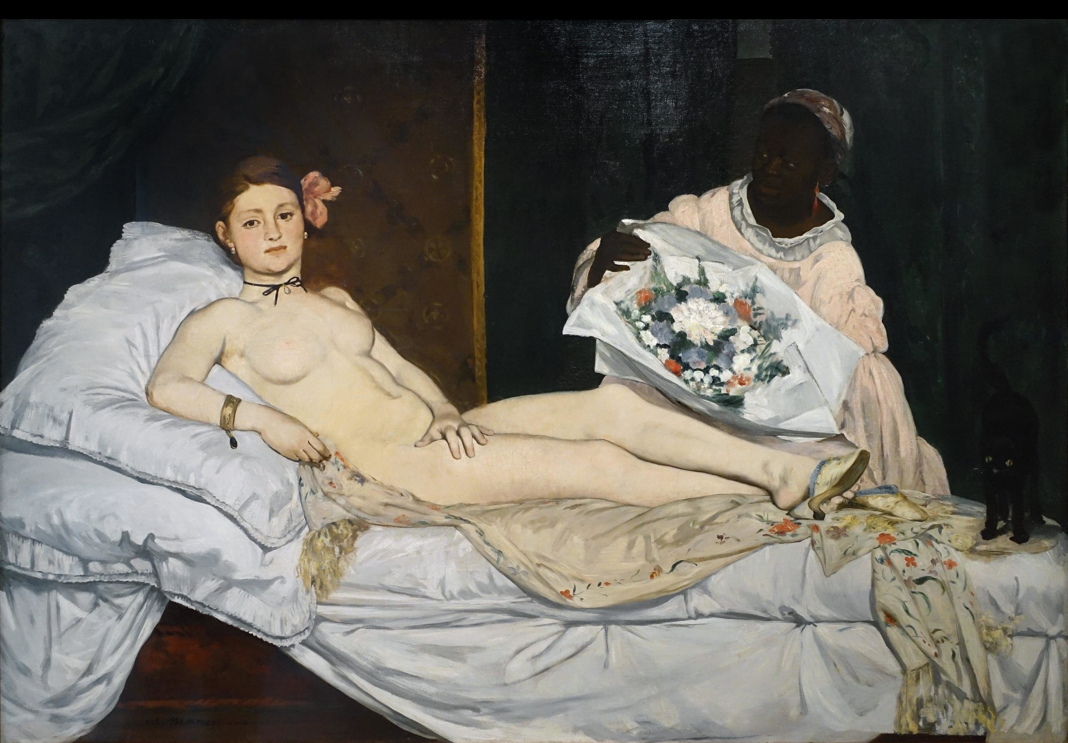
Impressionism
landscapes, moment in time, visible brush strokes, bright pure color, playing with light
considered “ground breaking,” 30 artists organized an exhibit because they kept getting rejected from salon—didn’t fit with ideals (blending, historical, etc); highly critiqued, work thought of as “sketches”
Americans accepted movement before Europeans
continued from realism: landscapes, middle class leisure, everyday life
Claude Monet, Impression: Sunrise, 1873
impressionism - landscape, bright colors, visible brushstrokes
quickly painted outdoors (plein air)—oil paint now in tubes (transportable)
purchased from impressionist exhibit

Mary Cassatt, Woman in a Loge (At the Opera), 1879
American but lived in Paris
subjects she has access to - domestic social life of upper middle class women
Paris Opera House - “go and be seen about,” scenes for impressionists
shows intermission at opera (illuminated)
woman is look at the other people, man is looking at her, (we form 3rd point—places us in the scene)
loose brushwork (black dress)
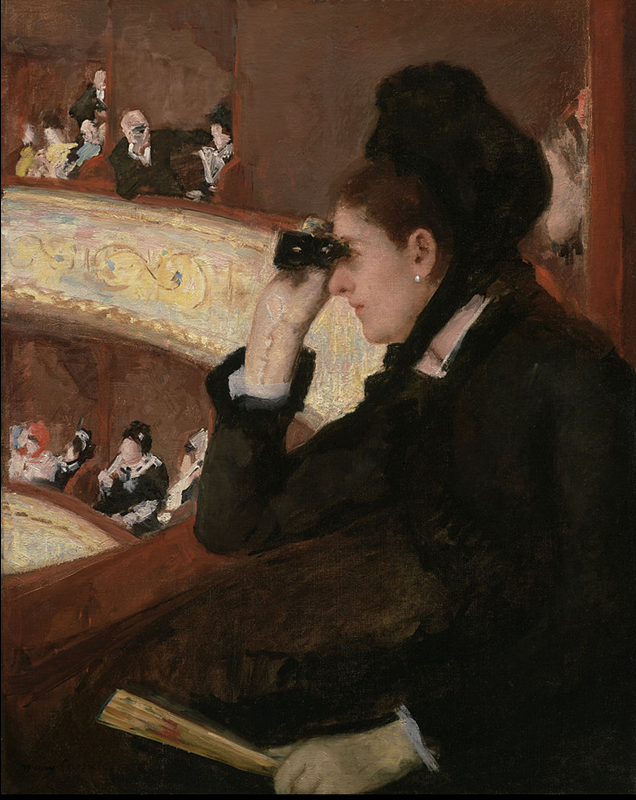
Georges Seurat, Saturday Afternoon on La Grande Jatte, 1884–6
post impressionism - pointillism
optical color theory - experimented with placing colors side by side
illusionistic perspective
upper-middle class leisure, green space in the modern city
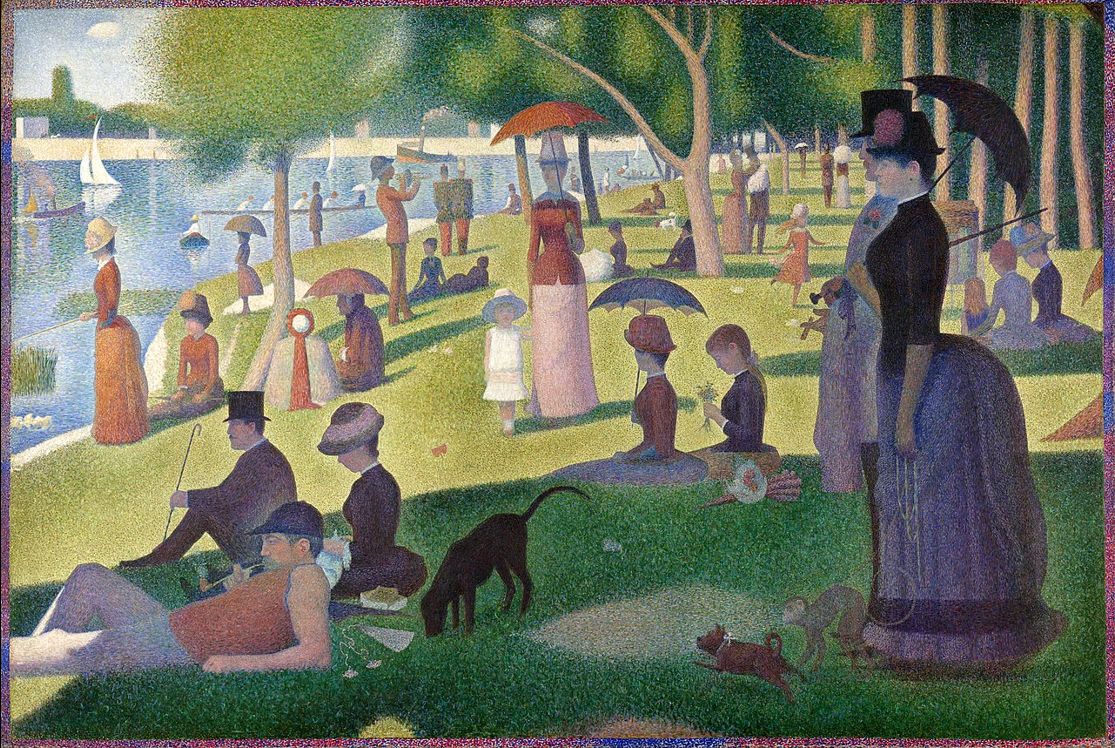
Paul Cézanne, Mont Sainte-Victoire, 1902-04, oil on canvas, 73 x 91.9 cm (Philadelphia Museum of Art)
how we perceive the world as we walk through it, expressed in one painting
painted multiple times, more abstracted than the first
looks unfinished, can see through to canvas
lends to cubism

Germain Boffrand and Chalres-Joseph Natoire, Salon de la Princesse, Hôtel de Soubise (Paris, 1736–9)
Rococo - elaborate and large, light and airy (many windows to let light in, ornamentation, mirrors), flamboyance
room is for the princess for entertaining purposes
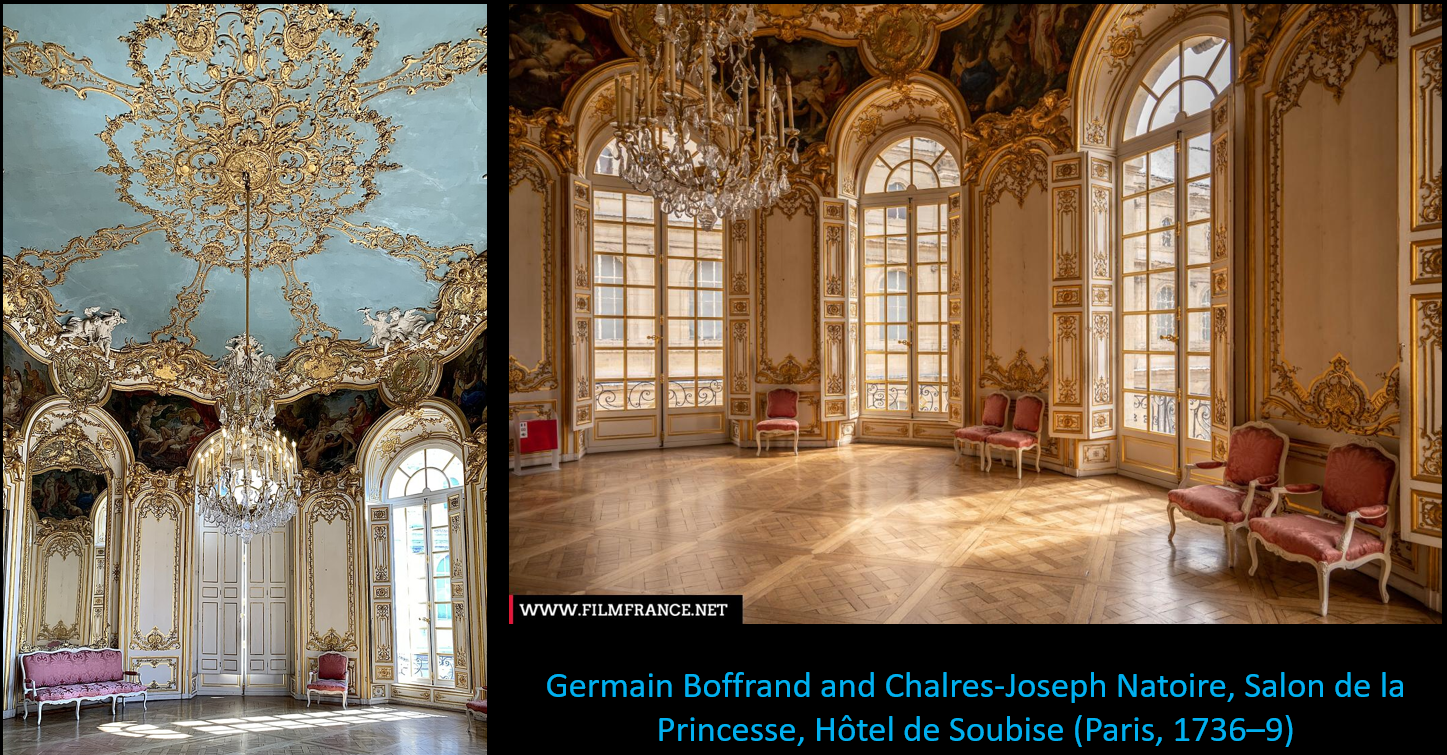
William Thornton, B. H. Latrobe, Charles Bulfinch, and Thomas U. Walter, and others, United States Capitol (Washington, D.C., c. 1793– 1828, 1851–7, and 1856–63)
Neoclassical architects found Rococo to gaudy and thought architecture should be returned to its purest form
grand scale, simple geometric forms
little ornamentation—blank walls
Greek/Roman details - inspired by the Pantheon (Rome)
combined ideas from multiple architects
made with material to look like marble

Karl Friedrich Schinkel, Altes Museum (Berlin, 1823–30)
Neoclassical—Greek revival - 18 ionic collumns
interior has rotunda (not greek)
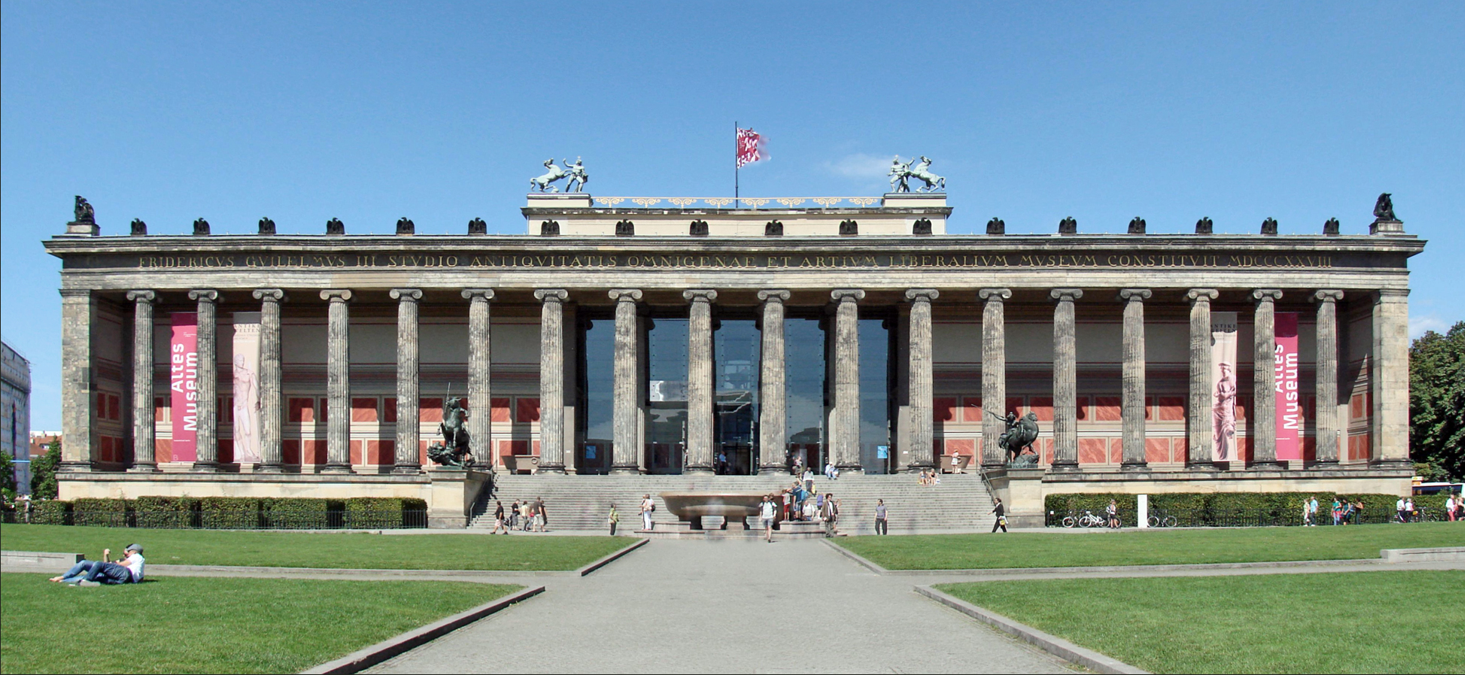
Charles Barry and A.W.N. Pugin, Houses of Parliament (London, 1835– 68)
old building burns down, rebuild it in Neoclassical or Gothic style? Gothic because:
harmony, return to orderly society of the middle ages
believed style originated in England (English nationalism)
honest form of architecture - everything structural contributed to building, spires contribute to form
Barry (neoclassical architect) designs structure, Pugin (Gothic) adds ornamentation (but was unhappy with the combination)

Gilman, Kendall & Post, Equitable Life Assurance Company Building (New York City, 1868–70)
first skyscraper (not called that at the time)
not crazy tall but significantly taller than is wide
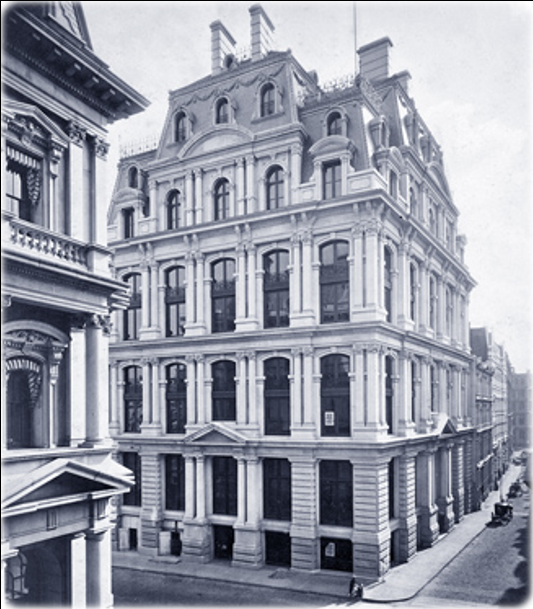
Joseph Nicéphore Niépce, View from the Window at Le Gras, 1826
“heliography” (sun drawing)
first permanently fixed image on paper
chemicals and light to create a reaction (early photography)
secretive about how he took the image
very long exposure (multiple days) so fuzzy appearance
works with Daguerre, who shortens exposure time and creates Daguerreotypes
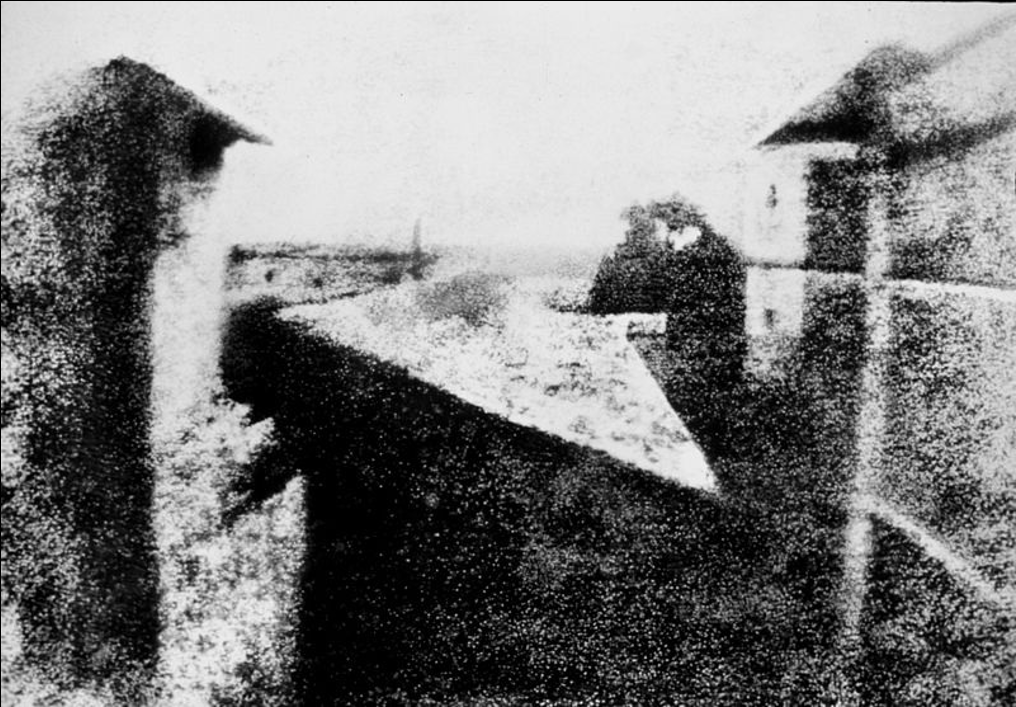
Alexander Gardner, Home of a Rebel Sharpshooter, 1863
dead confederate soldier killed during battle—shows aftermath from Civil War (exposure time too slow to capture battle)
published photographic sketchbook of Civil War
photo was posed and he used his own gun (lied and said the scene was still there when he returned months later)
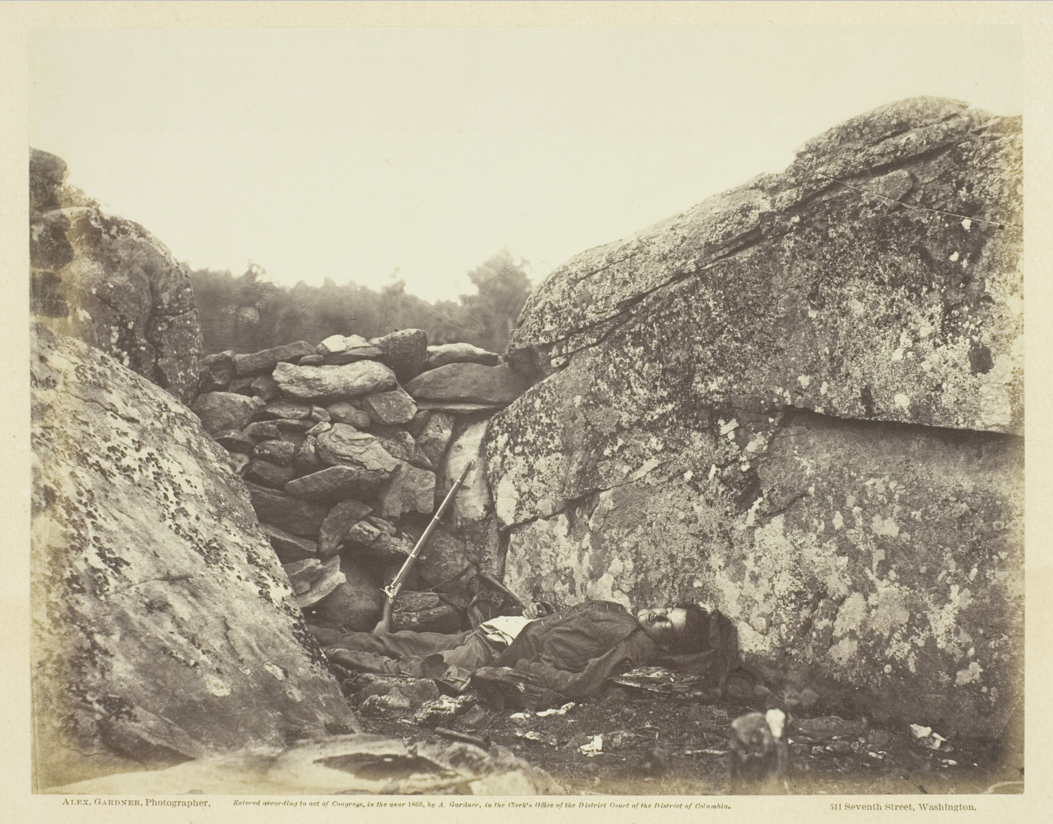
Eadweard Muybridge, Horse Galloping, 1878
sets up multiple cameras attached to a trip wire to get contiguous photos; looks like moving images
showed society that during a gallop there is a point where none of the horse’s hooves touch the ground
scientific side of photography
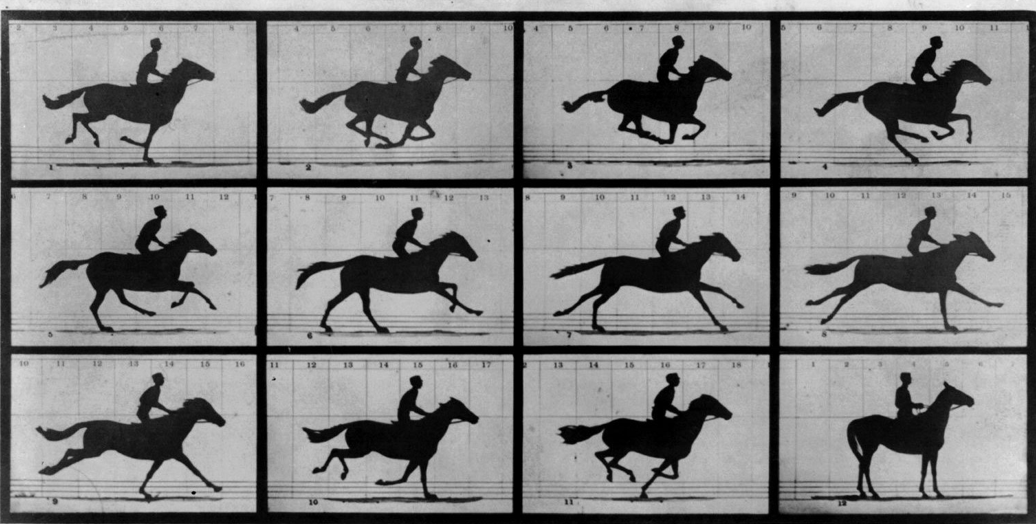
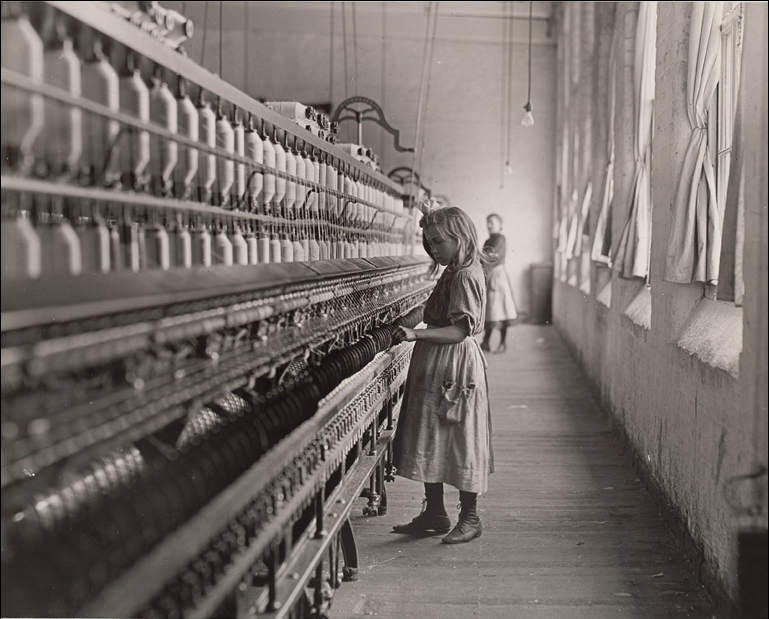
Lewis Hine, Child in Carolina Cotton Mill, 1908
muckraker - documented poor working conditions for societal change
after Civil War they needed labor so they hired children who they could pay less; dangerous machinery
documents child labor for for National Child Labor committee
Congress passes minimum age and maximum hours
conveys idea that these photos are what is actually happening (photojournalism)

Alfred Stieglitz, The Steerage, 1907
pictorialist - elevate photography to the status of fine art
ship of people but more interest in shapes and lines for overall composition than the specific subject matter
ideas of abstraction (like with European art at the time)
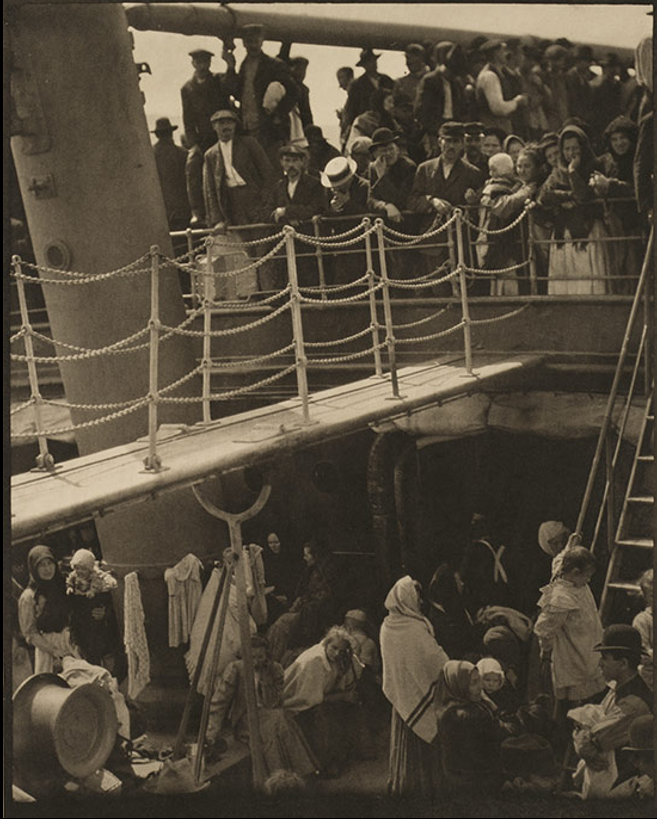
Academy (Royal Academy of Painting and Sculpture)
France’s leading national institution for artistic training and exhibition; emphasized classical, traditional, hierarchical genres of art, and precision in drawing, rejecting avant-garde tendencies
paintings over sculpture
hierarchy of genres
Academy’s ranking of types of art:
History painting - classical tradition (bible/allegories), largest; most impressive since they could not use a reference
Portraiture - likeness (copying nature)
Genre painting - scenes of everyday life (no moral message)
Landscapes - representation or rural/urban topography, real or imagined
Still life paintings - inanimate object (luxury goods), no figures or invention (least impressive)
Enlightenment
European intellectual movement of the 17th/81th centuries with revolutionary developments in art, philosophy and politics; criticized monarchs/elites
paintings should have a message and convey ideas of the Enlightenment (criticized Rococo)
reason, liberty, individual rights
French Revolution
period of political and societal change in France that began with the Estates General of 1789 and ended with the Coup of 18 Brumaire in 1999
orientalism
the Western portral of Eastern cultures (“Orient”) marked by stereotypes, cultural superiority, and a binary distinction that positions the “Orient” as exotic and backward compared to the “Occident”
Industrial Revolution
a period of scientific and technological development in the late 18th century that transformed largely rural, agrarian societies (especially in Europe and North America) into industrialized urban ones
en plein air
“out of doors” practice of painting entire finished pictures outdoors
impressionism (Monet)
haussmanisation
the rebuilding of Paris by chief architect Baron Haussmann in the mid 19th century
Paris was “nasty,” so he opened up the city (connected it), improved sanitation, water supply, traffic circulation
became a subject for Impressionists
Japonisme
experimentation with a wide range of pictorial modes, and printmaking techniques inspired by the growing popularity of Japanese woodcuts during the 1890s
ukiyo-e prints
Van Gogh and Cassatt heavily inspired by
pointillism
painting technique that uses tiny dots of various pure colors, which become blended in the viewers eye; developed by Seurat to produce greater degree of luminosity and brilliance in color
Grand Tour
a cultural tour of Europe typically taken by 18th century young upper-class men as part of their education
exposure to classical art and architecture influenced the Neoclassical movement (Greek and Gothic revival)
The Antiquities of Athens - book by englush architects to teach architects about Greek/Neoclassical styles (Greek revival)
skyscraper
a building with significant height, passenger elevators, and a metal frame (iron allows for building taller, invention of steel)
originates in urban America (NYC, Chicago)
land was expensive so built up rather than out
camera obscura
a darkened room with a small hole (lens) at one side through which an image is projected onto a wall or table opposite the hole (upside down)
since the 15th century (before Daguerre)
Daguerreotype
first publicly available photographic process; direct positive process, creating a highly detailed image on a sheet of copper plated with a thin coat of silver without use of a negative
widely used 1840s-50s
fragile, had to be framed
detailed, shorter exposure time (10 min?)
Calotype
early photographic process introduced in 1841 by William Henry Fox Talbot, using paper coated with silver iodine; creates a negative that can be printed to a positive (basis of all photography pre-digital)
exposure time shortened to 30s-1min
Pictorialism
an approach to photography that emphasizes the beauty of subject matter, tonality, and composition rather than documentation of reality (artistic side of photography)
Henri Matisse, Le Bonheur de Vivre (The Joy of Life), 1905–6
fauvism
inspo from Cezanne (post-impressionist)
unnaturalistic/radical color palette
harsh outlines
distorted scale invites you to enter the space
primitivism (pre-industrialized society)

Pablo Picasso, Les Demoiselles d’Avignon (The Young Ladies of Avignon), 1907
cubism
large pinkish shapes form figures, angular lines
inspo from African art
subjects are sex workers
Picasso’s misogynistic tendency to objectify women
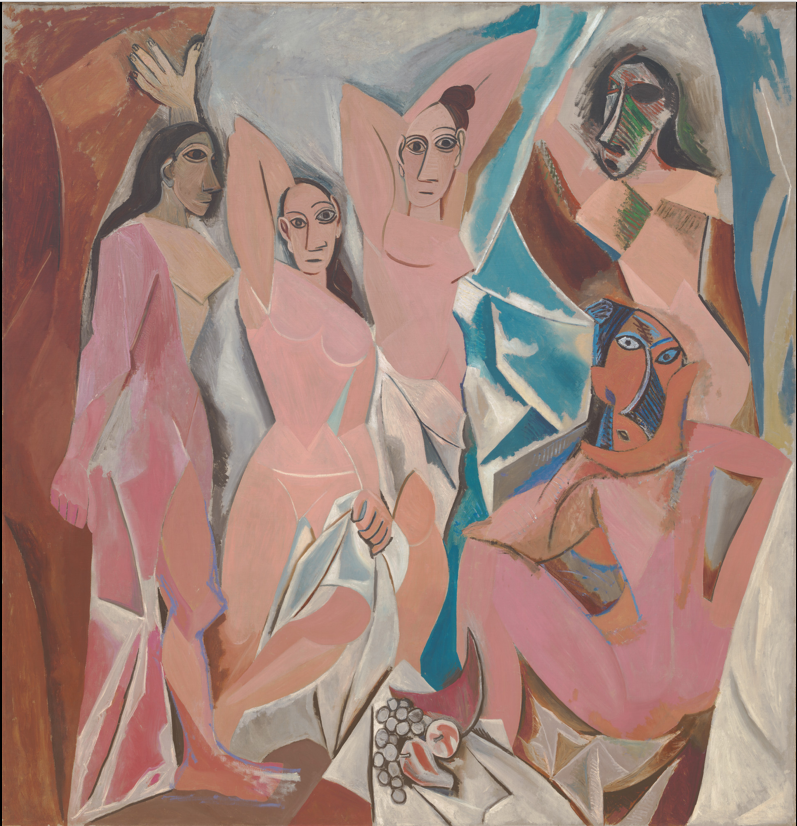
Wassily Kandinsky, Composition VII, 1913
expressionism, abstraction
chaotic, loud
doesn’t really depict anything in particular
clatter, conflict, violent energies
comparing art to music (tone, harmony)

Umberto Boccioni, Unique Forms of Continuity in Space, 1913
futurism
figure made of swirling forms
one of Italy’s most celebrated works (displayed on coin)
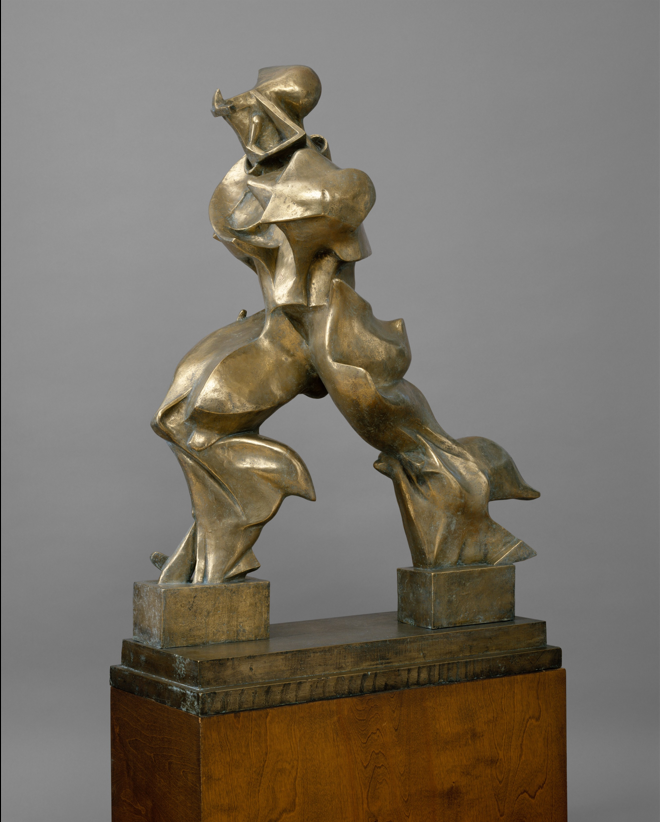
Marcel Duchamp, Fountain, 1917
Dada
urinal “repurposed” for art
didn’t make it himself but he “chose” it (ready made)—controversial, rejected from galleries
questions what can be considered art?

Pablo Picasso, Three Women at a Spring, 1921
Return to Order - more naturalistic and rendered than previous works; after war, less interest in fragmented figures
stable, solid, heavy figures
Neoclassism inspo - togas (resemble columns)
post war - eventually returns to cubism
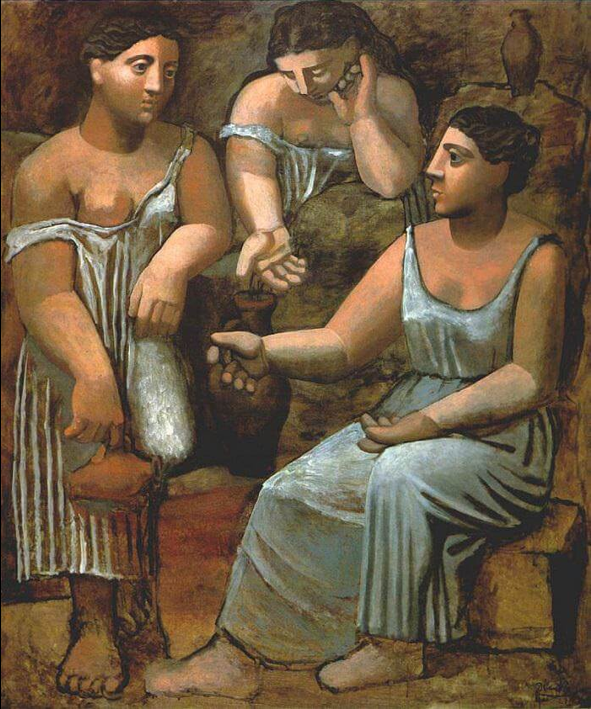
Theo van Doesburg, Composition VIII (The Cow), 1918, oil on canvas, 37.5 x 63.5 cm
neoplasticism
14 colored rectangles scattered evenly, none overlapping but some touching
started with idea of a cow but deconstructed it until it was more and more abstract (not pure abstraction because it still represents a subject)
biol down art to simplest forms

André Masson, Battle of Fishes, 1926

Mario Sironi, Italia tra le arti e le scienze (Italy Among the Arts and Sciences), 1935, 140 square meters
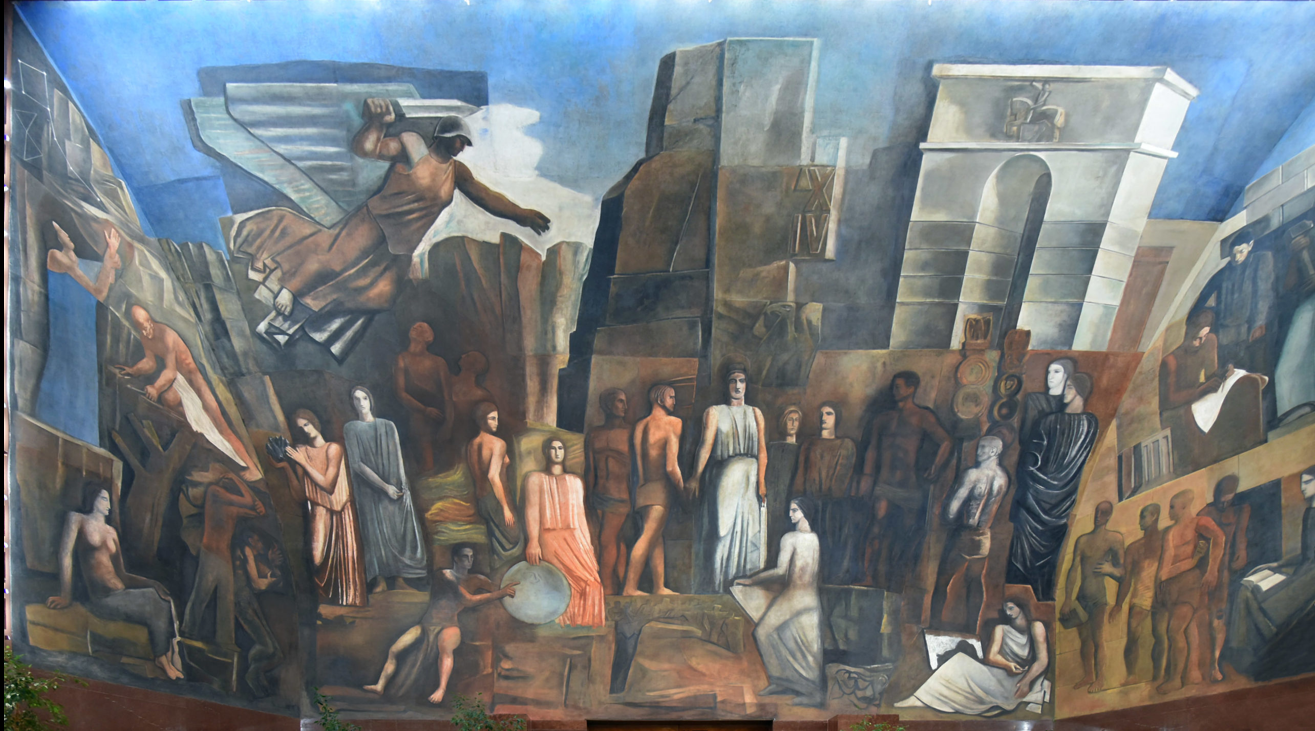
George Bellows, Cliff Dwellers, 1913
Horace Pippin, Mr. Prejudice, 1943
Aaron Douglas, From Slavery Through Reconstruction from the mural cycle Aspects of Negro Life, 1934
Jackson Pollock, Full Fathom Five, 1947
Mark Rothko, No. 3/No. 13, 1949
Robert Rauschenberg, Erased de Kooning Drawing, 1953
Andy Warhol, Marilyn Diptych, 1962
Barbara Kruger, Untitled (Your body is a battleground), 1989
Yoko Ono, Cut Piece, 1964
Joseph Kosuth, One and Three Chairs, 1965
Eleanor Antin, Carving: A Traditional Sculpture, 1973
Judy Chicago, The Dinner Party, 1974–9, Brooklyn Museum
Felix Gonzalez-Torres, Untitled (Ross), 1991
Yinka Shonibare CBE, The Swing (after Fragonard), 2001, mannequin, cotton costume, 2 slippers, swing seat, 2 ropes, oak twig and artificial foliage
Fauvism
Primitivism
Cubism
Expressionism
A
Abstraction
Dada
Readymade
Return to order
Neoplasticism
Surrealism
Automatism
Fascism
Ashcan School
Social Realism
Harlem Renaissance
WPA
Abstract Expressionism
Action Painting
Color Field
Neo Dada
Pop Art
Appropriation
Postmodernism
Performance Art
Conceptual Art
Culture Jamming